First Nations Health Strategy
January 2025 – July 2026

January 2025 – July 2026
Aunty Mary Atkinson (Wiradjuri/Ngunnawal Elder)
Maxine Little (nee Honeysett) is a proud Wiradjuri/Ngiyampaa woman, with connections to the three rivers: Murrumbidgee, Kalari and Macquarie. Maxine’s artwork highlights her initial engagement with community through Yarns on the Couch and general practice visits in early 2023/24 which helped inform the development of this Strategy and reflects her dedication to partnerships for better health in Murrumbidgee First Nations communities. . An experienced nurse and Aboriginal health practitioner, Maxine joined Murrumbidgee Primary Health Network (MPHN) in 2023 as the Aboriginal Health and Wellbeing Manager. Maxine is passionate about our community and ‘acknowledging the history of First Nations peoples, learning, growing and walking side by side together respectfully and humbly’.
The top circles of the artwork symbolise the opportunities she fosters for collaboration with Elders, at community meetings, Aunty Jean’s programs, NAIDOC Week events, health consortiums, and Reconciliation Action Plans (RAPs) all come together, reflecting Maxine’s belief in collaborative efforts for a healthier future. Open hands reaching upwards represent the creation of safe spaces for cultural change within healthcare. The pink highlights within these hands depict health barriers and needs identified through open communication with GPs, community conversations like Yarns on the Couch, and Aunty Jean’s programs.
The flow of partnership
The flowing river that winds through the artwork represents the vital partnerships Maxine cultivates, in her role of Aboriginal Health and Wellbeing Manager for MPHN. Aboriginal Medical Services (AMSs), Local Land Councils, Murrumbidgee Local Health District (MLHD), playgroup programs like Connected Beginnings, Wellways, and the Aboriginal and Torres Strait Island Justice Commissioner (ABSEC) are all depicted, highlighting this collaborative approach. This network of partnerships strengthens the foundation for culturally appropriate and effective healthcare services for First Nations communities across the Murrumbidgee region.
Maxine’s artwork is a celebration of partnerships, engagement, and centring First Nations health needs at the heart of the community and striving for equity in primary health care.

We acknowledge and pay respects to the traditional owners of the lands on which MPHN operates; the Wiradjuri, Nari Nari, Wemba Wemba, Perepa Perepa, Yorta Yorta, Ngunnawal, Ngarigo, Bangerang and Yitha Yitha Nations. We recognise our communities are made up of many Aboriginal and Torres Strait Islander peoples descended from additional mobs and clans who also call the Murrumbidgee region home.
We pay respect to Elders past, present and future and recognise these lands have always been places of traditional healing and medicine, and this plays a role in shaping future health services.
Aboriginal and Torres Strait Islander people should be aware that this document may contain images and names of deceased persons.
Throughout this document, we respectfully us the term ‘First Nations’ to encompass the rich diversity of Aboriginal and Torres Strait Island cultures and identities within the Murrumbidgee region. We acknowledge that ‘First Nations’ is a broad term, and we strive to collaborate with and learn from the specific communities we serve.
MPHN is a not-for profit organisation which has been supporting and delivering primary health programs for 30 years. Our purpose is to create connected, dynamic and equitable healthcare through empowered workforce and communities as we move towards our vision of well people, resilient communities.
MPHN is federally funded to deliver the Primary Heath Network program across the Murrumbidgee region. MPHN is one of 31 local and independent PHNs established nationally to support the primary healthcare sector and improve health outcomes, particularly for people at risk of poorer health outcomes. We deliver the PHN program across approximately 126,000 square kilometres to more than 250,000 people living in our 508 communities.
With the person at the centre of care, we plan and deliver programs to ensure the needs of our individual local communities inform our approaches. We achieve this by working with our community and partners to:
• Coordinate local services and systems to improve coordination of care.
• Commissions primary health services to meet population health needs with a focus on access and equity.
• Support capacity-building to ensure sustainable healthcare workforce through quality improvement, professional development, and other innovative measures.
MPHN is committed to improving the health and wellbeing of all First Nations people, and recognise the diverse language groups, kinship structures and customs of First Nations people and communities across the Murrumbidgee region. We commission First Nations health services within AMSs as well as mainstream services, supporting them to deliver services to our First Nations communities in a culturally safe manner.
MPHN collates First Nations specific data for the region to identify areas of focus for activities and to support service delivery, this information can be found within the 2022-2025 MPHN Health Needs Assessment - First Nations Profile. https://mphn.org.au/s/2022_FirstNations_Profile_FINAL.pdf
MPHN operates across a vast territory encompassing the traditional lands of various First Nations groups within the Murrumbidgee region, including First Nations people from other lands resettled within the Murrumbidgee Region (refer to Figure 1.1 for a visual representation of traditional lands.)
Murrumbidgee
of the population identify as Aboriginal and Torres Strait Islander
This is higher than both people according to the last census
14,548
According to the Australian Bureau of Statistics, the Local Government Areas within our region with the highest proportion of Aboriginal and Torres Strait Islander peoples as a percentage of the total population include: compared to
of Aboriginal and Torres Strait Islanders are aged under 25 years of all people
MPHN prioritises the health and wellbeing of First Nations people, aligning with national policies like the National Agreement on Closing the Gap and the National Aboriginal and Torres Strait Islander Health Plan. This commitment is reflected in the appointment of an identified role of Aboriginal Health and Wellbeing Manager who leads the development and integration of all First Nations health strategies across MPHN activities.
We recognise early detection and management of health risks, including social and emotional challenges alongside chronic illnesses, are crucial for improving health outcomes in all populations, especially our First Nations communities where disparities of health outcomes are increasingly evident. Additionally, welcoming, and culturally safe services are essential for encouraging engagement with the healthcare system.
To achieve this, MPHN actively seeks innovative and progressive approaches to improve the health and wellbeing of First Nations peoples in the Murrumbidgee region. We prioritise culturally appropriate service delivery that respects the unique needs and perspectives of First Nations communities.
Meaningful engagement is central to our work. We utilise various methods to gather feedback and implement changes based on community voices. Methods include online surveys and annual Yarns on the Couch events. During these events, MPHN’s Aboriginal Health and Wellbeing Manager and staff travel to community locations to create a comfortable, safe space for open dialogue. This fosters understanding of community needs, concerns, and barriers regarding healthcare access and drives our health needs assessments and service provision.
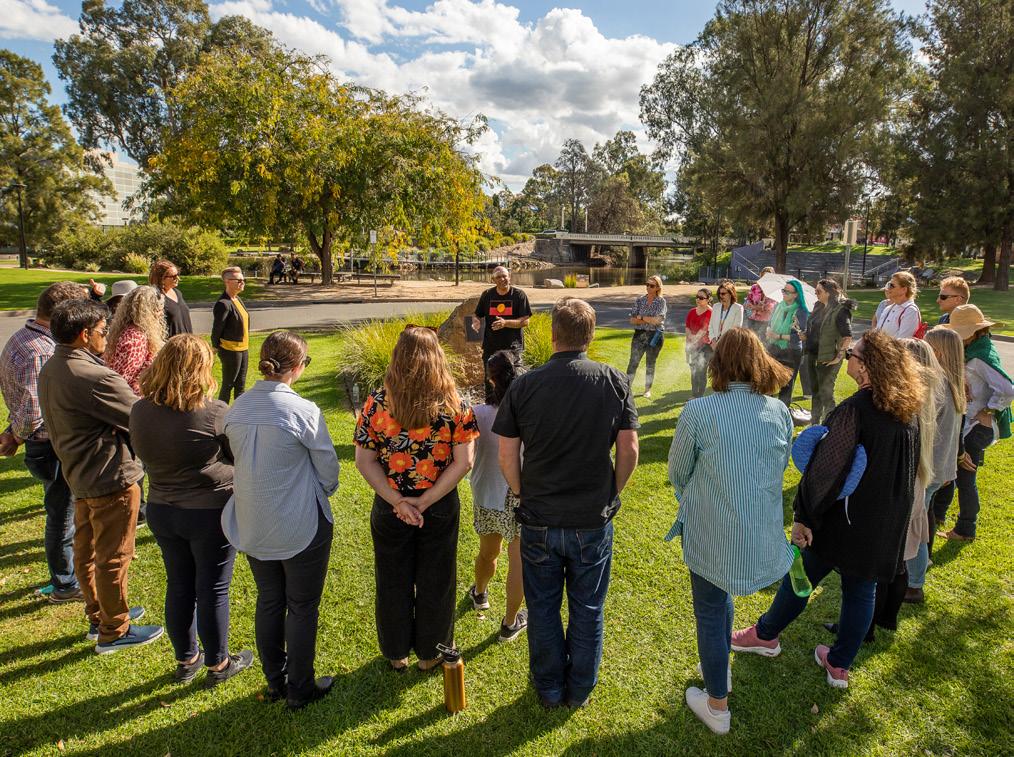
MPHN strives for a future where First Nations peoples within the Murrumbidgee region achieve health equity. This means having the same opportunities for good health as the wider population and being empowered to manage their own wellbeing within a culturally respectful environment.
MPHN’s First Nations Strategy is aligned to our organisations broader Strategic Plan focus areas including:
Invest in communities for improved health outcomes:
• Partnering with communities: to design care models that improve access, especially for priority needs.
• Closing the gap: Bridging the health gap between First Nations and non-Indigenous populations.
• Addressing social determinants: Working together to address social and cultural factors impacting health.
• Building resilience: Supporting practices that strengthen community resilience.
• Empowerment: Support First Nations people to make informed decisions about their health.
Support providers and enhance collaboration for stronger primary healthcare:
• Culturally appropriate care: Ensuring accessible and culturally appropriate health services.
• Workforce wellbeing: Partnering with providers for a culturally competent workforce.
• Local capacity building: Continuing to build the capacity of local healthcare providers to provide care to First Nations peoples and communities.
• Integrated responses: Strengthening collaboration for integrated approaches to healthcare.
• Advocacy: Advocating for communities and providers to influence culturally sensitive policies.
Lead innovation and inspire for positive impact:
• Innovative approaches: Exploring models to improve access and quality of care for First Nations peoples.
• Research partnerships: Building partnerships to gather evidence and inform service and care delivery improvements.
• Empowering leaders: Supporting First Nations leaders to influence change.
• Addressing unmet needs: Identifying opportunities for new investments and partnerships.
Further details on our Strategic Plan can be found here: https://mphn.org.au/2023-strategic-plan
In 2023, MPHN launched its Innovate Reconciliation Action Plan (November 2023- October 2025) with our vision for Reconciliation:
To establish an ever-learning culture that acknowledges, listens, celebrates, and embraces Aboriginal and Torres Strait Islander communities across the Murrumbidgee.
The reconciliation vision of MPHN is to recognise the resilience of First Nations peoples across the Murrumbidgee through the acknowledgement of past injustices; realisation and understanding of the impacts of transgenerational trauma; and building and sustaining an authentic role in the healing process and movement towards a united, reconciled Australia. In our effort to bring MPHN’s vision of Well People, Resilient Communities to life, no decisions about the health and wellbeing of Aboriginal and Torres Strait Islander peoples will be considered, discussed, created, decided, or implemented without their knowledge, involvement, and collaboration. https://mphn.org.au/reconciliation-action-plan
Our vision for healthier First Nations communities in the Murrumbidgee region relies on collaboration. MPHN believes no single organisation can achieve this goal alone. That is why it’s committed to building strong partnerships with a network of likeminded individuals and groups.
Key partners:
Murrumbidgee Aboriginal Health Consortium: This consortium brings together health organisations such as the Murrumbidgee Local Health District (MLHD), AMSs, Local Land Councils, and others focused on First Nations wellbeing. We work together to share resources, expertise, and coordinate activities that address the priorities.
Commissioned service providers: MPHN funds services delivered by AMSs including Cummeragunja Health and Development Aboriginal Corporation (Viney Morgan), Riverina Medical and Dental Aboriginal Corporation (RivMed), and Griffith Aboriginal Medical Service (GAMS). These services provide culturally safe healthcare and wellbeing programs throughout the region. MPHN also collaborates with mainstream general practices and service providers to support access to culturally appropriate primary care services including care coordination, mental health, suicide prevention and alcohol and other drugs supports.
Training organisations: Supporting a strong First Nations health workforce is crucial. MPHN funds traineeships within AMS organisations to create opportunities for local Aboriginal and Torres Strait Islander people to enter healthcare professions.
Collaboration for better outcomes:
Integrated Team Care: This program, delivered through AMS and mainstream practices, improves access to coordinated care, multidisciplinary teams, and self-management support for First Nations peoples with chronic health conditions.
Culturally appropriate resources: MPHN works with AMSs and other relevant organisations to develop culturally appropriate resources and marketing materials promoting testing, vaccination, and public health measures.
Community engagement: MPHN’s Clinical Councils, Community Advisory Committee (CAC), and Local Health Advisory Committees (LHACs) ensure First Nations voices are heard. These groups provide guidance on how to best deliver services and programs meet the specific needs and priorities of our First Nations communities.
By working together, MPHN can help create a healthcare system that is responsive, culturally safe, and delivers better health outcomes for all First Nations peoples in the Murrumbidgee region.
General practice
Improving access to culturally safe care for First Nations people
General practices play a vital role in delivering culturally safe and inclusive healthcare to First Nations communities across the Murrumbidgee region. This is crucial for improving their health outcomes, as accessing mainstream services can be challenging due to cultural appropriateness concerns.
The importance of culturally safe primary care
Culturally appropriate and safe primary healthcare services are essential as they encourage engagement with the healthcare system and facilitate early detection and management of health conditions, including social and emotional wellbeing, alongside chronic illnesses.
A key priority for MPHN is working collaboratively with general practices to achieve culturally safe and responsive care. This includes activities led by MPHN’s Aboriginal Health and Wellbeing Manager and the broader MPHN Primary Care Engagement (PCE) team:
• Building connections and partnerships: The Aboriginal Health and Wellbeing Manager works with the PCE team to build their capacity and capability to engage with practices regarding culturally appropriate care for First Nations patients. They also visit practices to strengthen existing partnerships and build new networks to help foster collaboration and provide additional support for primary care providers. There are also close working relationships with the AMSs and mainstream providers who deliver the Integrated Team Care program aimed at supporting First Nations peoples who experience chronic disease to access the specialist supports they require.
• Offering cultural support and advice: During visits, the Aboriginal Health and Wellbeing Manager offers cultural support and advice to general practices, including collaborating with AMSs like Viney Morgan, RivMed) and GAMS to provide safe referral pathways and collaborative care.
Topics discussed with general practices:
• Cultural safety and inclusive practices
• 715 Health Assessments, including their uptake
• MBS (Medicare Benefits Schedule) items specifically available for First Nations peoples
• Integrated Team Care (ITC) program and referral pathways
• HealthPathways program
• Importance of routinely asking patients if they identify as First Nations
• Creating a culturally safe workplace environment
• Available cultural support resources
• Bulk billing and cost considerations
• Care plans with regular six and 12 month reviews
Collaboration with AMSs
MPHN also fosters collaboration with established AMSs within the region. These include Viney Morgan, RivMed, and GAMS.
Working with the AMSs aims to:
• Streamline service delivery: Collaboration helps ensure a smooth and coordinated approach to healthcare delivery across all primary care providers. This benefits patients by simplifying access and referrals.
• Support with Integrated Team Care (ITC), Alcohol and Other Drugs (AOD) and mental health services: MPHN collaborates with these services to offer additional support regarding the ITC program, AOD and mental health services offered.
Connecting with our communities is the cornerstone of MPHN’s work. MPHN actively seek innovative and progressive approaches to improve the health and wellbeing of First Nations peoples in the Murrumbidgee region, prioritising culturally safe and appropriate services.
A key initiative is the Yarns on the Couch activity. During these events, MPHN’s Aboriginal Health and Wellbeing Manager, along with other MPHN staff members, travel to a minimum of three Aboriginal communities per year, fostering open dialogue in a comfortable and safe setting, allowing us to:
• Gain insights into community needs: We actively listen to understand the specific health issues faced by each community and identify any barriers to accessing culturally safe care.
• Collaborative discussions: Discussions with community members encompass various topics, including:
• Cultural safety within general practices and the broader primary healthcare system
• Mental health services and referral pathways
• Primary care referral processes
• Social determinants of health: housing and food insecurity
• Cost considerations and bulk billing
• Education and screening programs for chronic illnesses
• Understanding and navigating the Isolated Patients Travel and Accommodation Assistance Scheme (IPTAAS)
• Resources and support for drug and alcohol use
• Support services for grief and loss.

GriefandlossPaediatricians
MPHN actively participates in community events throughout the year that celebrate significant dates for First Nations peoples. We are also increasing the number of events we host ourselves to show our strong commitment to First Nations health and wellbeing, especially for our staff members.
Our presence at these events serves several important purposes:
• Visibility and support: By being present, we demonstrate our commitment to the health and wellbeing of First Nations communities. This visibility also strengthens our connections with community members.
• Gathering insights: Attending these events allows us to stay informed about current healthcare issues and any barriers faced by the community. This valuable information helps us tailor future engagement and service delivery efforts.
• Building relationships: Participation fosters open dialogue and builds trust within the community, creating opportunities for further collaboration and engagement.

MPHN recognises significant dates for First Nations people because they:
• Align with Closing the Gap goals: Acknowledging these days reinforces MPHN’s commitment to improving health outcomes for First Nations peoples.
• Build trust and awareness: Respecting these dates fosters stronger relationships and educates the broader community about First Nations health challenges.
• Inform service delivery: Understanding historical and ongoing challenges helps tailor culturally appropriate healthcare services.
Culturally safe healthcare
✓ Support organisations within the Murrumbidgee region to provide culturally safe and inclusive environments.
✓ Encourage artwork, posters, flags, and the inclusion of First Nations Health Workers.
✓ Acknowledge Country at events and meetings, following standard protocols which are promoted to commissioned providers and the broader primary care setting.
✓ Host Yarns on the Couch events to gather feedback and inform Health Needs Assessments (HNAs) which inform MPHN activities and stakeholder engagement including commissioning.
✓ Collaborate with universities, TAFE, and other educational institutions to support the growth of the First Nations healthcare workforce.
✓ Conduct quality improvement activities and use data to identify areas for improvement in First Nations healthcare.
✓ Development of a First Nations GP toolkit to support culturally safe practices in general practice.
✓ Encourage Aboriginal and Torres Strait Islander Health Workers to take on identified roles within primary care.
✓ Support commissioned providers and primary care with access to cultural training.
Partnerships for health service planning with First Nations peoples
✓ Actively engage with local partners, stakeholders, and communities to promote MPHN’s commissioned services and opportunities such as co-design of services and build partnerships.
✓ The inclusion of an Aboriginal Impact Statement as part of project establishment and planning processes.
✓ Partner with First Nations people in health service planning, MPHN governance and joint initiatives with specific groups such as First Nations Interagencies.
✓ University partnerships support First Nations research and evaluation activities, such as our Greater Choice for At Home Palliative Care – First Nations activity.
✓ Partner with First Nations organisations and stakeholders such as AMSs, Land Councils and Elders groups to ensure their voices are heard in healthcare planning and delivery.
✓ First Nations peoples are prioritised in all healthcare planning and delivery activities that we undertake.
✓ Involvement with First Nations Interagencies to promote MPHN commissioned services, organisational activities and build partnerships.
✓ Encourage identified positions internally within MPHN and with commissioned healthcare services.
✓ Utilising First Nations health profile and other relevant data to help drive activity with groups such as LHACs, clinical councils and CAC.
✓ Data and activity reports are used to identify opportunities for new partnerships.
Empowering and engaging First Nations peoples
✓ MPHN’s Aboriginal Health and Wellbeing Manager visits general practices to build connections and offer support for practices to engage with First Nations peoples and patients.
✓ Close working relationship with the providers of the Frist Nations Integrated Team Care (ITC) Program including the Indigenous Health Project Officers who work with practices across the region.
✓ Support Aunty Jean’s programs and other community initiatives.
✓ ‘Tell it Well’ stories showcase positive experiences of First Nations peoples within the healthcare system.
✓ Utilise data from Yarns on the Couch and community engagement activities to identify areas of action and activity including to empower First Nations peoples.
✓ Promote First Nations days of significance and specific programs on our website and through community messages.
✓ Including identified positions internally and encouraging commissioned services and primary care to also have identified positions.
✓ Utilising First Nations health profile and other relevant data to help drive activity with groups such as LHACs, clinical councils and CAC which include the involvement of First Nations people and communities.
Increase co-design activities with First Nations peoples
Improved service access and experience based on First Nations priorities
Work with the procurement and commissioning team to identify co-design activities and include First Nations peoples and groups as participants
Work collaboratively with the MPHN data and commissioning teams to identify data relevant to First Nations peoples and priorities to identify areas of focus for improvement of service access and experience
Services are more First Nations inclusive and culturally safe
Joint service planning with First Nations groups
Increased media presence for local First Nations peoples
The inclusion of First Nations groups in Health Needs Assessment (HNA) activities and any service planning activities
Extend media training opportunities to local First Nations peoples
Better access and experience of services for First Nations peoples
Increased First Nations input in service planning
Increased First Nations positive stories and media representation
Increase the local First Nations healthcare workforce
Identify opportunities for local First Nations peoples to share their stories with media and increase the number of First Nations local Tell it Well stories
Develop strong relationships with education institutes to increase training opportunities for local First Nations people
Increased capacity and capability for local First Nations peoples to engage with media
Increased positive media of local First Nations people
Increased First Nations workforce
Formalise partnerships with First Nations agencies
Feedback from community engagement with First Nations people incorporated into healthcare service delivery
Increased First Nations partnership opportunities
Establish Memorandums of Understanding (MOUs) with First Nations agencies
Feedback from Yarns on the Couch and other engagement with First Nations peoples is fed back and incorporated into healthcare service delivery
Increased commitment and clarity in partnerships with First Nations agencies
Improved service delivery and experience resulting from First Nations community feedback
Including First Nations peoples in the commissioning cycle
Close the feedback loop with First Nations community and groups
Data and local knowledge are harnessed to increase the number of partnerships with First Nations organisations and groups
Work with the commissioning team to identify sections of the commissioning cycle where First Nations peoples can be engaged
Feedback outcomes and opportunities with First Nations community and groups we engage with
Increased breadth of engagement and input from First Nations organisations and groups
Inclusion of First Nations peoples and voices within the commissioning cycle
Increased trust of MPHN with First Nations communities and groups who engage with us
The top circles represent opportunities for building community alongside Elders, meetings, Aunty Jean’s programs, NAIDOC events, the Health Consortium, and the RAP working group collaborating with First Nations people for better health outcomes and stronger futures.
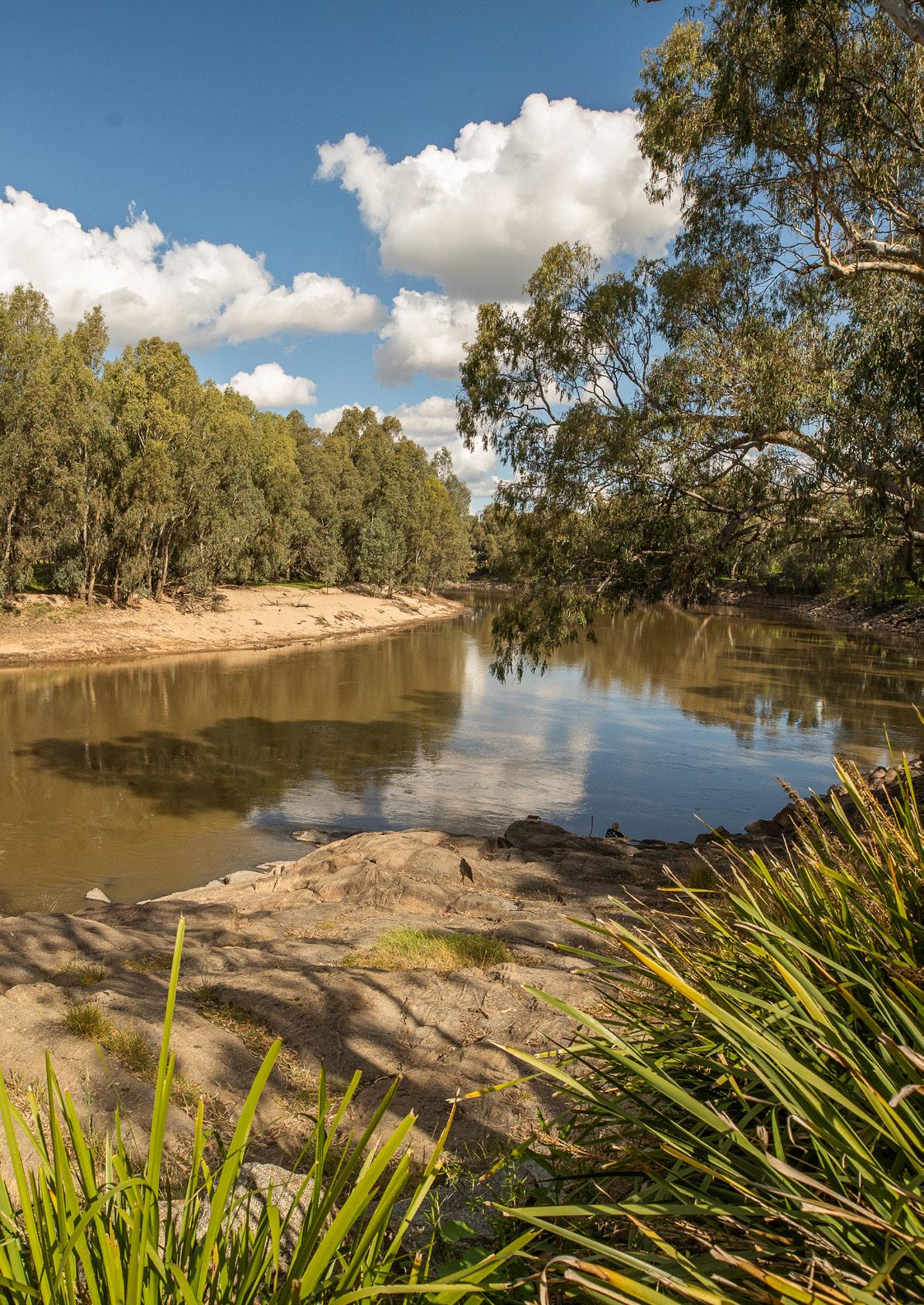
Development of this resource has been guided by relevant MPHN, state and national plans, guidelines, and frameworks to ensure our actions are informed by best practice, and the health needs of our First Nations communities. These include:
This health plan sets the policy direction for Aboriginal and Torres Strait Islander health and wellbeing. It guides the development of all Aboriginal and Torres Strait Islander health policies, programs, and initiatives over the duration of the plan. The plan represents the government’s ongoing commitment to lead the systemic change needed to improve health outcomes for Aboriginal and Torres Strait Islander people. As demonstrated through the National Agreement on Closing the Gap (National Agreement), this means fundamentally changing the way governments work with Aboriginal and Torres Strait Islander stakeholders, organisations, communities, and individuals. It is a shift from a top-down approach to working in genuine partnership.
The plan has been developed in partnership with First Nations peoples to achieve better health outcomes, with the plan reflecting the priorities and embedding a holistic perspective of First Nations peoples health. This perspective recognises the influence of social factors, and the strengths of culture as a protective influence on physical, social, and emotional wellbeing.
The plan focuses on preventing issues before they occur. It aims to give First Nations peoples and communities the skills and knowledge to:
• Make healthy decisions
• Effectively navigate the system
This includes through the delivery of healthcare that is:
• Place based
• Person centred
• Culturally safe and responsive.
The plan focuses on holistic and place base care that will provide the best outcome for First Nations people to live long, healthy lives that are centred in culture.
Further Information can be found at: https://www.health.gov.au/topics/aboriginal-and-torres-strait-islander-health/how-wesupport-health/health-plan
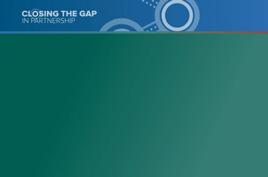
The objective of the National Agreement on Closing the Gap is to enable First Nations peoples and governments to work together to overcome the inequality experienced by First Nations peoples and achieve life outcomes equal to all Australians.
For the first time, the National Agreement has been developed in genuine partnership between Australian governments and the Coalition of First Nations Peak Organisations.
The Agreement commits all governments to a new era of partnership and shared decision-making to close the gap in life outcomes for First Nations peoples. It recognises First Nations peoples know what is best for their peoples and communities. It also acknowledges the unique strengths of First Nations and that culture recognition is critical to driving real change.
At the centre of the National Agreement are four priority reforms that focus on changing the way governments work with First Nations peoples.
The priority reforms will:
• Strengthen and establish formal partnerships and shared decision-making
• Build the First Nations community-controlled sector
• Transform government organisations so they work better for First Nations peoples
• Improve and share access to data and information to enable First Nations communities make informed decisions.
Further information can be found at: https://www.closingthegap.gov.au/national-agreement


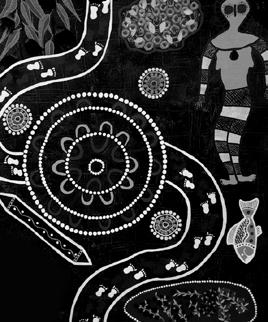
The NSW Aboriginal Mental Health and Wellbeing Strategy (2020-2025) stands as a pivotal force in transforming mental healthcare for First Nations people in New South Wales. Recognising the importance of cultural competency and community involvement, the strategy prioritises collaboration with First Nations communities and organisations. This collaborative spirit fosters the development and delivery of respectful and effective mental health services that resonate with the unique needs and perspectives of First Nations peoples.
This commitment to partnership extends beyond simply providing services. The strategy serves as a catalyst for empowerment, fostering a sense of ownership and control within First Nations communities over their mental health and wellbeing. By working together, the strategy aims to build culturally safe spaces where First Nations peoples feel comfortable seeking and receiving help.
Further information can be found at: https://www.health.nsw.gov.au/mentalhealth/resources/Pages/aborig-mhwellbeing-2020-2025.aspx
















Through our overarching vision Well people, resilient communities across the Murrumbidgee, MPHN’s Strategic Plan provides a framework for a comprehensive approach to serving priority populations in primary care. By adapting the core principles and replicating successful strategies, we can create targeted plans for other groups with specific needs, such as our First Nations peoples.
View the strategic plan online: https://mphn.org.au/2023-strategic-plan
MPHN’s Health Needs Assessment 2022-2025 serves two main purposes:










1. Understanding the Murrumbidgee region: This assessment provides a comprehensive picture of the health needs and healthcare services available across the Murrumbidgee region. It analyses demographics, health statistics, and existing healthcare resources.
2. Prioritising service gaps: By identifying areas where current services fall short of the community’s needs, the assessment helps the MPHN prioritise its efforts. This information informs strategic planning and resource allocation, ensuring they focus on areas with the greatest impact.
The Health Needs Assessment guides MPHN in tailoring its services to best address the health challenges faced by the Murrumbidgee population.
The Health Needs Assessment can be viewed at: https://mphn.org.au/health-needs-assessment-20222025





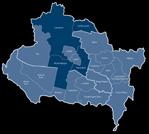
MPHN’s Health Needs Assessment process forms individual community profiles, one of which is a First Nations profile, addressing this priority population group through data-driven advocacy, identifying services gaps, informing strategic planning, and benchmarking progress by tracking health outcomes over time.
Our First Nations Heath Needs Assessment profile can be viewed at: https://mphn.org.au/s/2022_FirstNations_Profile_FINAL.pdf
The reconciliation vision of MPHN is to recognise the resilience of First Nations peoples across the Murrumbidgee through the acknowledgement of past injustices, realisation and understanding of the impacts of trans-generational trauma, and building and sustaining an authentic role in the healing process and movement towards a united reconciled Australia.
In our effort to bring MPHN’s vision of Well People, Resilient Communities to life, no decisions about the health and wellbeing of First Nations peoples will be considered, discussed, created, decided, or implemented without their knowledge, involvement, and collaboration.
You can view our Innovate Reconciliation Action Plan online: https://mphn.org.au/reconciliation-action-plan
MPHN’s First Nations GP Toolkit equips general practices in the Murrumbidgee region to deliver culturally safe care. It covers essentials like Closing the Gap initiatives, cultural competency training, and creating a welcoming environment. It also explains relevant programs (MBS, ITC) and data on First Nations health.
This resource helps general practices improve service delivery for First Nations communities.
General practices will be provided with the toolkit, if you would like a copy, please contact our Aboriginal Health and Wellbeing Manager.
This protocol supports and guides MPHN staff to follow First Nations cultural protocols when hosting events. It covers greetings, acknowledgments, payments, and a calendar of significant dates. This ensures respectful interactions at MPHN-run events, while acknowledging other organisations’ protocols for events they lead.
This policy recognises the importance of workforce that reflects the diversity of the community in which they work and shows our commitment to equal opportunity in employment, and supports actions aimed at increasing employment opportunities for First Nations people, recognising the value they bring with unique skills, competencies, and opportunities.
While currently in draft, this document will focus on our strategic actions, striving to provide culturally safe and appropriate access and equity and align with our strategic plan.